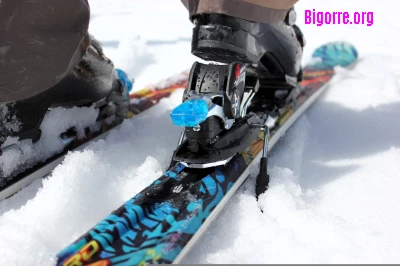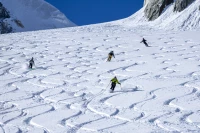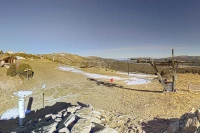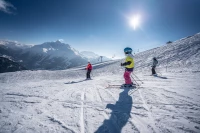As the first snowflakes herald the return of winter, the call of the mountains grows ever stronger. Before strapping on skis and hitting the slopes, a ski trip requires careful planning. After choosing your resort, you need to take care of your equipment and prepare physically to enjoy the snow and avoid injury.
Physical Preparation
Skiing is a demanding sport that particularly engages the muscles of the legs, torso, and back. Physical preparation—ideally 6 to 8 weeks—is essential for greater endurance, stability, and to prevent muscle soreness. This will allow you to better enjoy the slopes and avoid injuries related to fatigue and lack of muscle tone. Train for muscle strengthening, endurance, and flexibility. Core exercises and stretching are also recommended to prevent tension and improve your balance. Here are a few exercises to help you prepare.
Develop cardiovascular endurance 2 to 3 times per week, starting with 30 minutes of activity at an easy pace, such as slow jogging or brisk walking, cycling, or rowing. Also, take the stairs instead of the elevator. Increase by 5 minutes each week.
Strengthen your legs 2 to 3 times per week with 2 to 3 sets of exercises for your quadriceps, hamstrings, and glutes (squats, forward or reverse lunges, stiff-legged deadlifts or hip hinges, step-ups, glute bridges).
Strengthen your core with planks. Essential for control on descents, perform planks, side planks, bird-dog poses, or Russian twists 3 times per week.
Work on proprioception and knees for injury prevention 2 times per week. By improving balance and ligament stability, crucial for skiing, through balance exercises on one leg or on an unstable cushion. Single-leg squats and skaters, controlled lateral jumps.
Promote mobility and stretching daily for the calves, quadriceps, hamstrings, hips (using the pigeon pose), and lower back.
And during this period, remember to drink plenty of fluids to stay hydrated and go to bed early enough to get a good night's sleep.
Next, let's talk about equipment!
Preparing your equipment is key to a great ski vacation. If you don't already own your skis or snowboard, you can choose between buying or renting skis, boots, a helmet, and poles. This choice goes beyond the idea that renting is only for those who ski once a year. Let's review the advantages and disadvantages.
The advantages of renting:
- Skis are rented ready to ski, no need to worry about maintenance.
- Access to skis that are suited to your level, with expert advice included. This is particularly interesting for beginners, or for those who want to progress.
- You have to queue at the rental shop. Not if you book your skis online, like with Notresphere, which promises a quick rental.
It's a way to try out new equipment without investing in it, like the yooner, which offers a new sensation halfway between a sled and a monoski, with added shock absorption.
It's a way to try skis before buying them.
No year-round storage.
No transport, whether as luggage on the train or on the roof of a car.
The disadvantages of renting:
It's more expensive.
The boots and helmet have been worn by others, even though they are disinfected and sanitized between rentals.
You must return the equipment in the same condition as when you rented it. You must check the equipment at the beginning of the rental period. Insurance can cover your liability in case of damage to the equipment.
The advantages of buying
- You have your own equipment, carefully chosen according to your skill level, your skiing style, and your preferences. You own your skis and you take good care of them. That's an argument that's enough for some, not for others.
- You're the only one who has used the boots and helmet.
- The initial budget is higher, but it's a one-time investment. Until you want to change your equipment.
No need to queue at the rental shop, straight to the slopes.
The disadvantages of buying:
You have to store your equipment all year round. Skis, boots, helmet, and poles take up a lot of space!
You have to maintain your equipment before the season: sharpen the edges yourself or have them sharpened to ensure good grip on hard snow or ice. This needs to be done again during the season.




